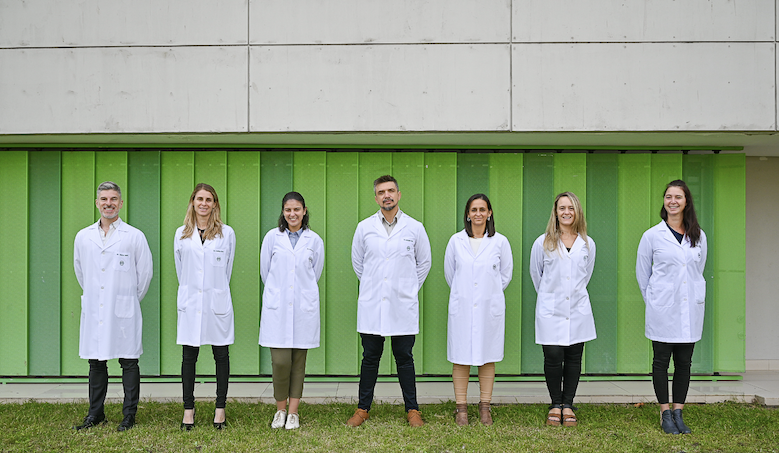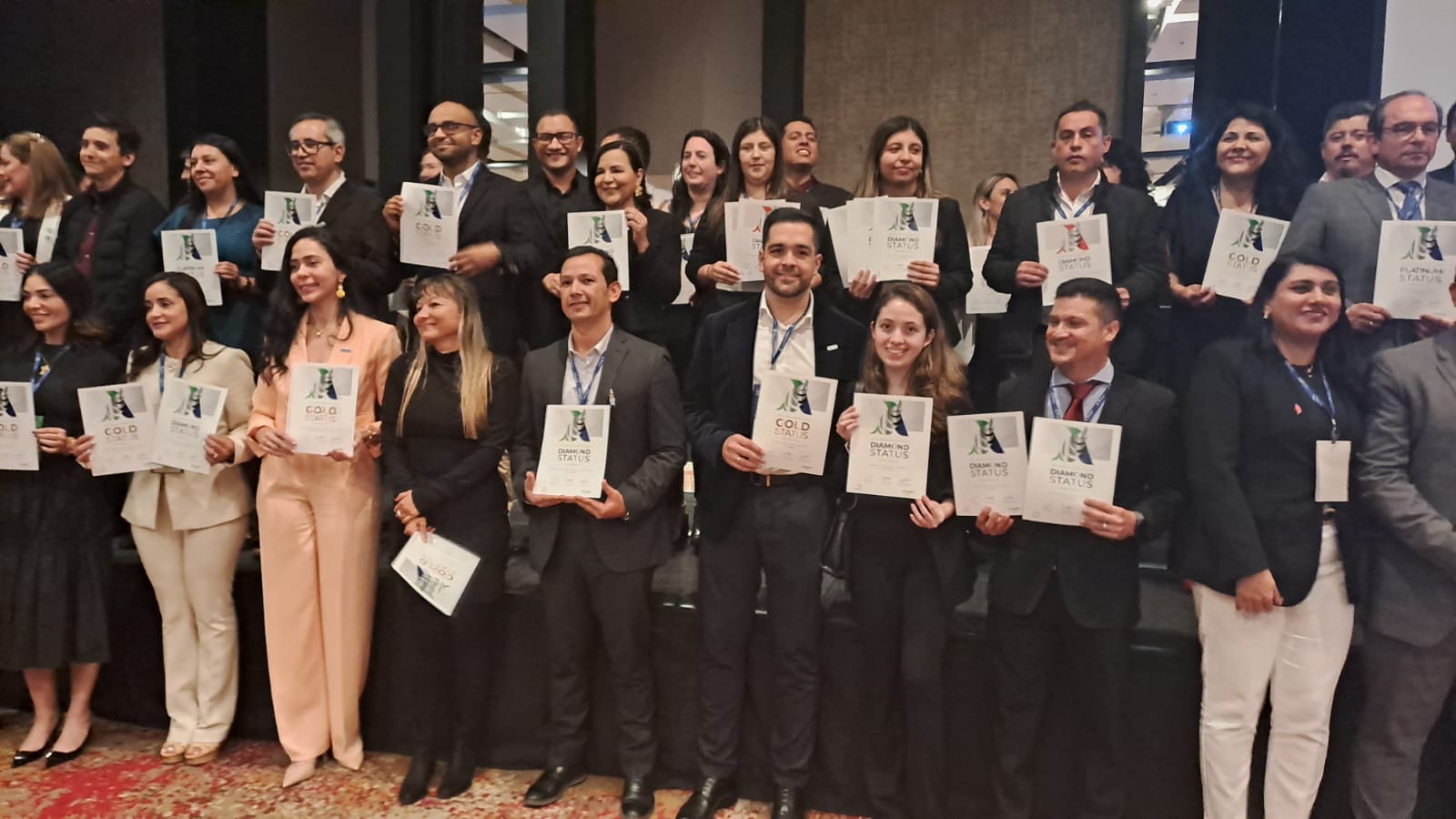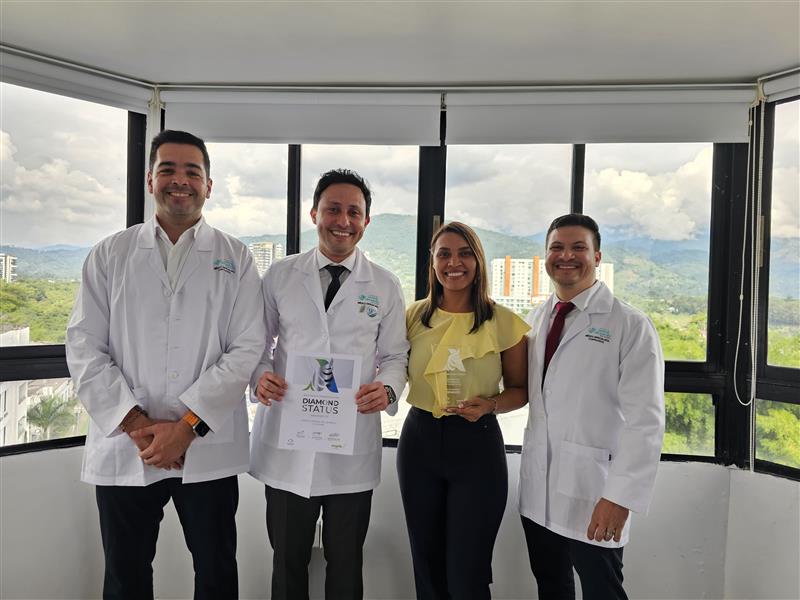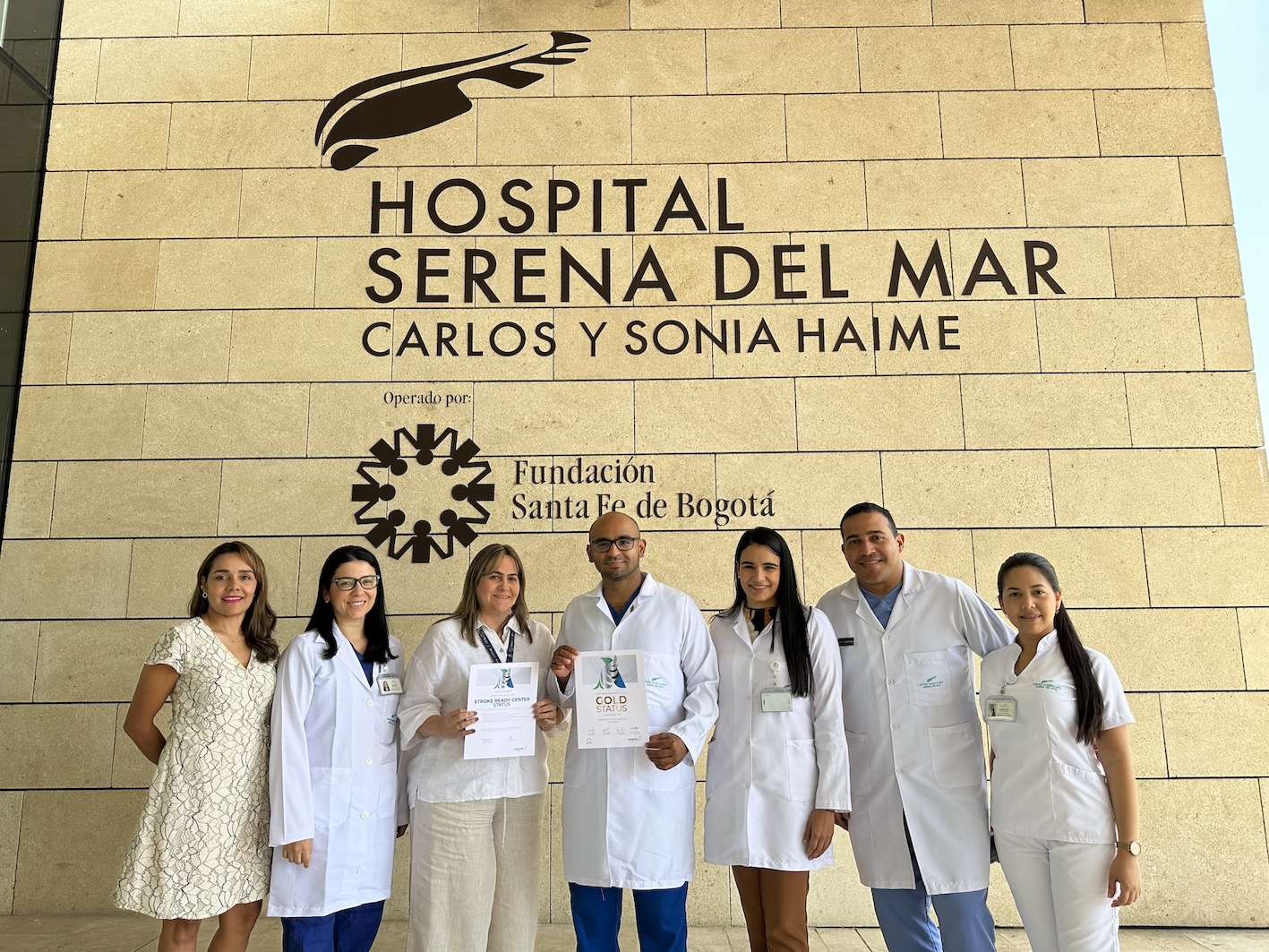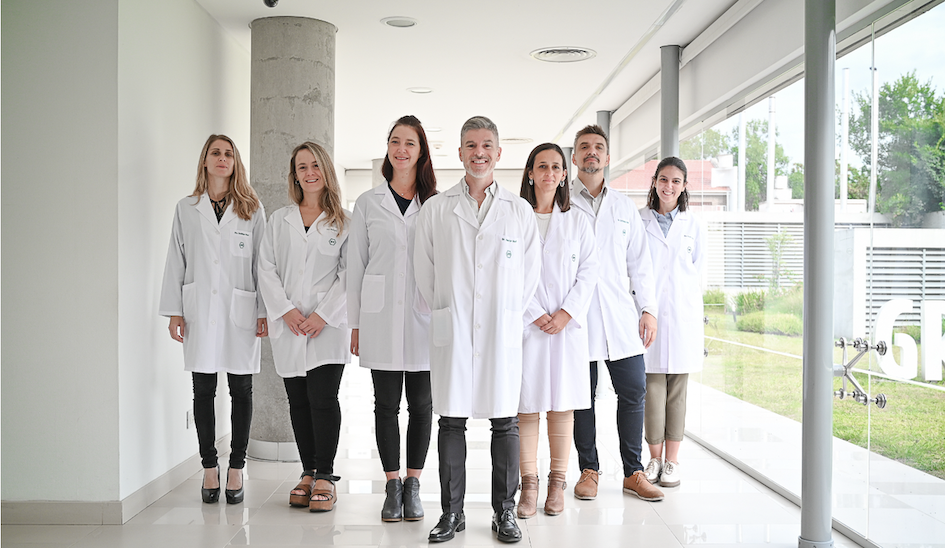
Pada 2 Mei 2022, Dr Ignacio Cigalini, kardiolog intervensional dan koordinator kode AMI di Rumah Sakit Privado de Rosario di Argentina, melakukan penggantian katup aorta transkateter (TAVR) pada seorang pria berusia 63 tahun.
Prosedur TAVR, di mana kateter digunakan untuk memperbaiki katup pengganti di atas yang lama, memiliki beberapa keuntungan dibandingkan bedah konvensional, tetapi memang membawa peningkatan risiko stroke akut. Terlepas dari setiap tindakan pencegahan, pasien menderita stroke.
Tepat pada pukul 13.12, pengeras suara di Rumah Sakit Privado de Rosario mengumumkan Code Stroke.
Waktu untuk perawatan akan memecahkan rekor selama 10 menit, di mana kepala neurologi rumah sakit Dr. Guadalupe Maria Bruera akan membuat beberapa keputusan yang mengubah hidupnya.
Stroke di rumah sakit vs stroke yang dimulai masyarakat
Hingga 17% dari semua stroke terjadi selama rawat inap perawatan akut pada pasien yang masuk rumah sakit untuk diagnosis atau prosedur lain, menurut makalah tentang stroke iskemik di rumah sakit oleh Dr. Ethan Cumbler dari Fakultas Kedokteran Universitas Colorado yang diterbitkan dalam Rumah Sakit Saraf pada tahun 2015. Antara setengah dan dua pertiga dari kondisi ini bersifat perioperasi dan periprokedural, dengan pasien bedah jantung yang paling berisiko.
Stroke di rumah sakit memiliki hasil yang jauh lebih buruk daripada stroke yang dimulai oleh masyarakat dan tidak hanya terjadi pada pasien-pasien lansia, sudah sakit, dan memiliki tingkat kontraindikasi medis atau bedah yang lebih tinggi untuk trombolisis. Stroke di rumah sakit juga cenderung mengalami penundaan evaluasi dan pengobatan yang lebih lama.
Sebuah pernyataan ilmiah pada Februari 2022 dari Asosiasi Jantung Amerika mengutip bukti bahwa pasien dengan stroke di rumah sakit memiliki interval yang jauh lebih lama dari pengenalan gejala hingga pencitraan saraf dibandingkan dengan pasien stroke di unit gawat darurat (4,5 jam versus 1,2 jam). Sebuah penelitian dari registri Get With The Guidelines menemukan bahwa jika dibandingkan dengan stroke yang menyerang masyarakat, waktu yang berlalu sejak pengenalan stroke hingga trombolisis juga lebih lama, yaitu 81 menit dibandingkan 60 menit.
Alasan untuk hal ini antara lain gejala stroke yang salah dikaitkan dengan penyakit di mana pasien dirawat di rumah sakit, efek sedasi atau anestesi, atau efek samping obat-obatan. Tidak seperti pasien dengan stroke yang muncul di masyarakat, korban stroke di rumah sakit juga tidak memasuki sistem melalui unit gawat darurat dengan budaya urgensinya. Sebaliknya, mereka cenderung diperhatikan oleh staf yang tidak berpengalaman dalam diagnosis stroke dan kurang menyadari pentingnya bertindak cepat.
Sepuluh menit yang berharga
Warga Rosario yang berusia 63 tahun adalah salah satu orang yang beruntung. Dr. Cigalini, seperti halnya orang lain di Rumah Sakit Privado de Rosario, secara teratur menghadiri pelatihan kode stroke yang diadakan setiap bulan, dan sangat menyadari pentingnya tindakan segera dalam kasus stroke. Saat ia menyadari bahwa pasiennya menunjukkan afasia, ia mengaktifkan Code Stroke tanpa ragu sejenak.
Dalam perjalanan dari lab cath ke ruang pencitraan yang jaraknya tidak jauh, evaluasi NIHSS oleh ahli neurologi yang bertugas, Dr. Guadalupe Bruera, memberikan skor 12. Menggunakan resonansi magnetikangiografi, hanya perlu waktu dua menit untuk mengesampingkan perdarahan dan menemukan penyumbatan pada segmen dari M3 ke arteri serebral tengah kiri. Dengan menyadari bahwa bekuan darah tidak dapat dicapai dengan pembedahan trombektomi, Dr. Bruera memutuskan untuk melakukan trombolisis. Dia memberikan bolus itu sendiri. Sisa infus akan dilakukan di ICU di mana pasien akan tetap berada selama 60 menit.
Dr Cigalini tetap hadir, memberikan data penting yang menginformasikan keputusan terapeutik dan mengelola komunikasi dengan keluarga pasien.
Seluruh proses mulai dari aktivasi kode stroke hingga pengobatan hanya membutuhkan waktu 10 menit yang berharga.
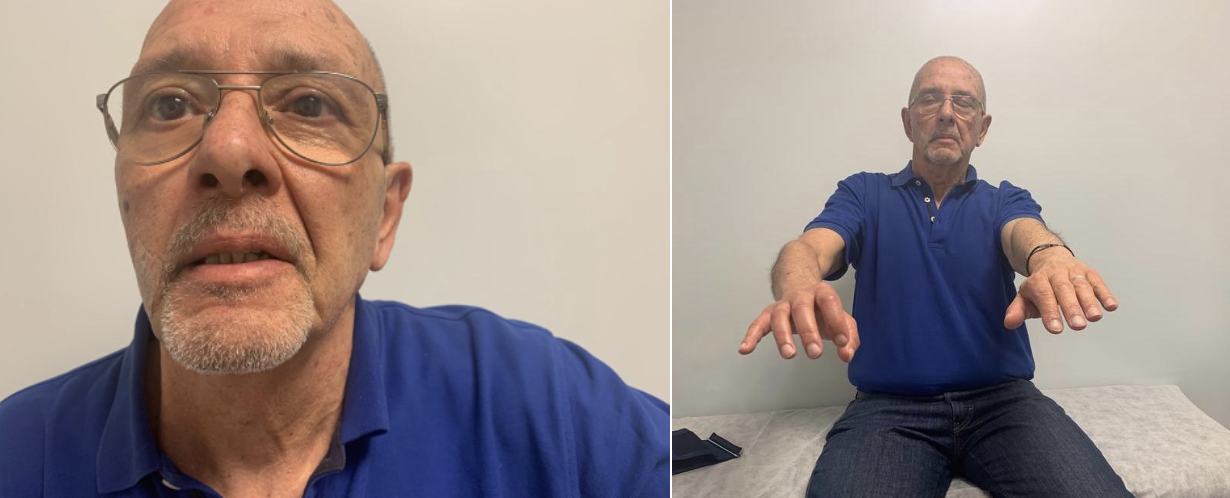
Pekerjaan setiap orang harus dihormati
Rumah Sakit Privado de Rosario menerima sekitar 219 pasien dengan stroke per tahun dan memiliki rata-rata waktu door-to-needle 40 menit untuk stroke yang dimulai masyarakat. Rata-rata waktu perawatan untuk stroke di rumah sakit mencapai tren selama 35 menit. Penjelasannya terletak pada protokol kode stroke yang terstruktur dengan jelas dan kerja sama transdisipliner, ujar Dr. Bruera. Sangat penting untuk manajemen optimal stroke di rumah sakit, pelatihan kode stroke rutin melibatkan staf dari semua departemen di seluruh rumah sakit. Akibatnya, terdapat kesadaran yang luas akan perlunya bertindak dengan cepat saat stroke dicurigai, dan semua orang mengetahui latihan tersebut saat Code Stroke diumumkan.
Jalur pasien yang sangat terorganisir meminimalkan penundaan pengobatan, dan simulasi yang difasilitasi oleh Angels Initiative membantu menunjukkan peluang untuk perbaikan, tetapi kerja tim adalah faktor penentu dan hierarki yang diratakan membantu memobilisasi semua orang dalam tim.
“Salah satu aspek mendasar dari stroke adalah transdisiplineritas,” kata Dr. Bruera. “Sepuluh hingga 15 tenaga medis profesional berpartisipasi dalam sebuah kode stroke, bersama dengan staf keperawatan dan administratif.
“Setiap anggota tim ini harus merasa diberdayakan – sesuatu yang tidak hanya berasal dari pelatihan tetapi juga dari contoh. Meskipun ada satu orang yang mengoordinasi kode stroke, pekerjaan setiap orang harus dihormati.
“Tim stroke yang sukses dibangun dengan prinsip bahwa konstruksi pengetahuan selalu bersifat kolektif. Tidak ada yang dapat dipelajari secara individu.”
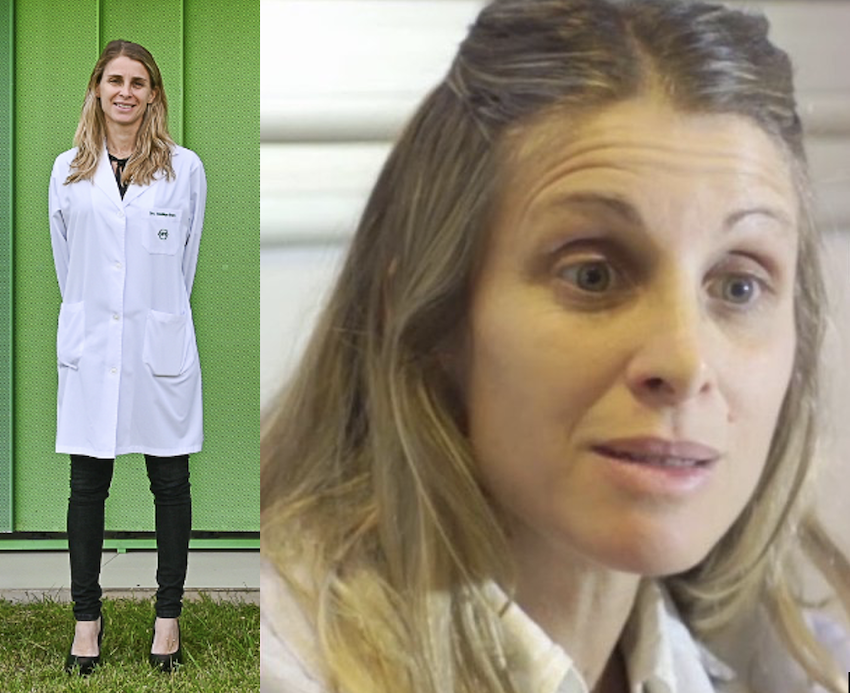
Kebaikan mendasar manusia
Terbukti bahwa “keajaiban” Rosario selama 10 menit hanyalah sebagian dari hasil organisasi dan pelatihan. Keberhasilan tim stroke ini juga berakar pada prinsipnya, dan prinsip-prinsip yang mengatur tata laksana stroke di HPR tidak terpisahkan dari nilai-nilai pribadi Dr. Bruera.
Dia menggambarkan dirinya sebagai “seseorang yang mencoba belajar setiap hari” dan rumah sakitnya sebagai lingkungan yang memfasilitasi pembelajaran: “Saya belajar banyak dari pasien, perawat, sekretaris, dan rekan kerja.”
Kualitas obat yang dipraktikkan di rumah sakitnya, dan khususnya oleh rekan-rekannya di bidang Kardiologi, adalah salah satu alasan dia memilih Rosario daripada peluang untuk membangun kariernya di tempat lain.
Dia berkata, “Saya sangat mencintai negara saya, bahkan dengan semua kekurangannya, dan khususnya kota Rosario.”
Kecintaan terhadap negara dan belajar adalah warisan keluarga. Dr. Bruera dan saudara-saudaranya dibesarkan oleh seorang ibu psikolog dan seorang ayah ahli neurologi yang juga merupakan guru. Dia berkata, “Saya tumbuh dalam keluarga yang nilai intinya mencerminkan kebaikan mendasar manusia, seperti bersikap suportif dan menghormati orang lain.”
Nilai-nilai ini menunjukkan ekspresi dalam program stroke di Rumah Sakit Privado de Rosario dan, bersama dengan jalur terorganisasi dan pengambilan keputusan sepersekian detik, terkadang dapat memberikan keajaiban dalam 10 menit.
